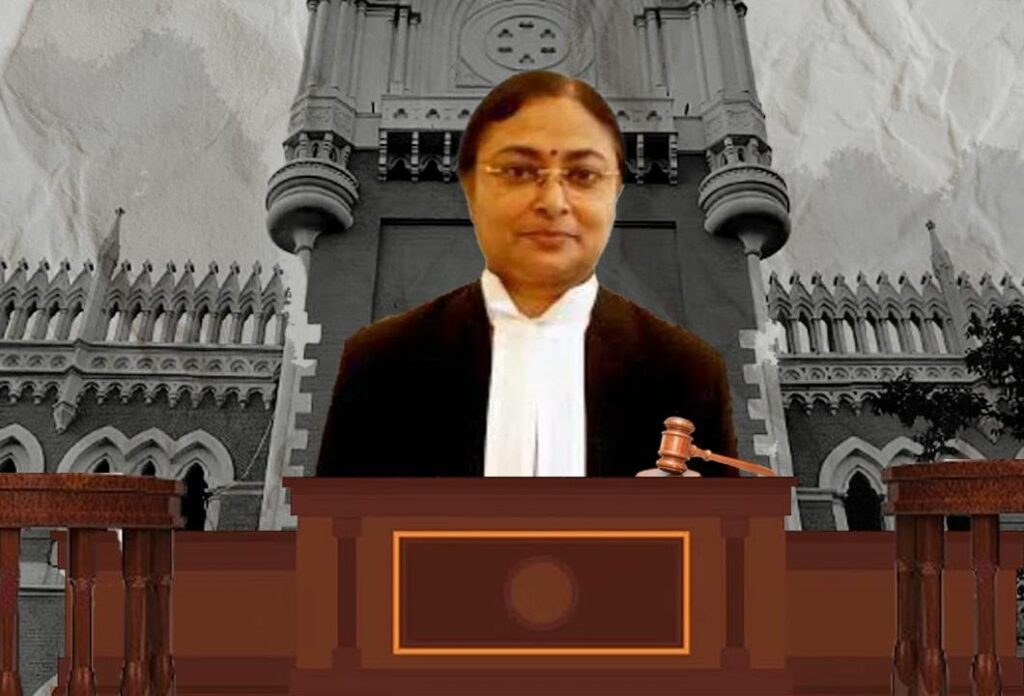NIN365 Desk, Kolkata : In the heart of Ward 8 in Nalhati Municipality, a concrete testament to dreams was erected, only to face a dramatic demise orchestrated by the Kolkata High Court. The saga began when whispers of an unlawfully built house reached the ears of the local residents, sparking a legal battle that would ultimately unfold like a gripping novel.
This architectural marvel, standing proudly against the skyline, found itself in the crosshairs of controversy, becoming the canvas upon which a riveting legal drama unfolded. The Kolkata High Court, presided over by the formidable Justice Amrita Sinha, cast a spotlight on this construction, deeming it unauthorized and deserving of removal.

Picture this: a bustling cityscape, where the clash between justice and construction echoes through the narrow alleys. It was here that a local resident, fueled by a sense of righteousness, filed a legal complaint, setting the stage for an epic showdown in the hallowed halls of the high court.
Justice Amrita Sinha, a beacon of wisdom and authority, meticulously examined the case, unraveling the intricacies of legality woven into the very foundation of the disputed house. With a swift stroke of the judicial pen, the directive to dismantle this structure was issued, leaving the municipality with the weighty task of executing the order.
The owner of the ill-fated house, a protagonist caught in the web of bureaucracy, stood defiantly, proclaiming the residence was intended for noble residential purposes. In a dramatic courtroom exchange, they passionately argued their case, painting a vivid narrative of dreams shattered by the swift hand of justice.
Amidst the legal theatrics, the owner lamented the absence of written notice or permission from the municipality. This poignant plea struck a chord with the onlookers, who began questioning the intricacies of governance and the thin line between dreams and regulations.
As the demolition unfolded, the once-proud structure crumbled, echoing the clash between individual aspirations and the collective will of the legal system. The owner, now facing the harsh reality of their demolished dream, voiced concerns about the fate of other similar constructions in the vicinity.
Enter the unsung heroes of the municipality, diligently following Justice Amrita Sinha’s order to remove the illegally constructed building. The municipal workers, clad in uniforms symbolizing authority, executed the demolition with precision, embodying the unwavering commitment to upholding the rule of law.
The air was thick with anticipation as the story unfolded, capturing the imaginations of the Indian youth society. The tale of a concrete giant brought to its knees by the gavel of justice resonated with a generation grappling with the complexities of legality and individual rights.
In the aftermath of the demolition, the cityscape bore witness to a mosaic of emotions – from shock to contemplation. The story of the demolished house became a conversation starter, sparking debates in college canteens and youth gatherings across the nation.
The narrative served as a powerful reminder that even in the realm of bricks and mortar, the echoes of justice reverberate. The youth society, captivated by the allure of a story that unfolded in their very midst, found themselves questioning the delicate balance between personal aspirations and societal regulations.
As the sun set on the remnants of the once-proud house, a collective introspection swept through the city. The tale of Ward 8’s demolished dream house had etched itself into the collective consciousness of the Indian youth, leaving them with a lingering question – in a world where dreams are built with bricks, how resilient are they in the face of the judicial hammer?
DISCLAIMER
Our news media denounces any form of bias and disapproves of sensationalism. The disseminated news is entirely educational and aimed at social awareness. Our media maintains absolute impartiality, adhering solely to the purpose of education and social consciousness.


